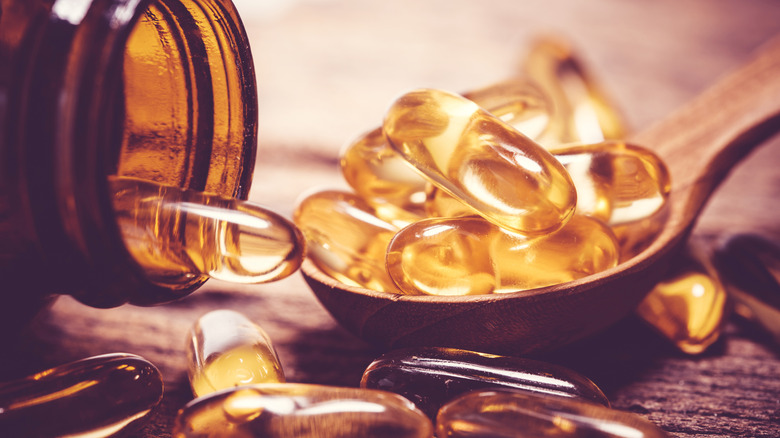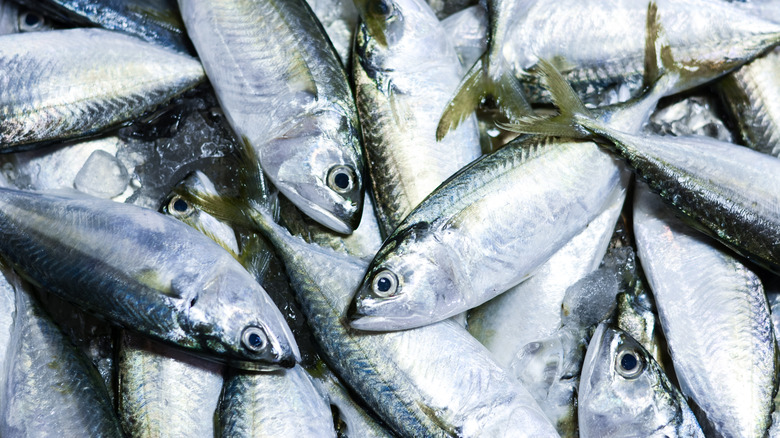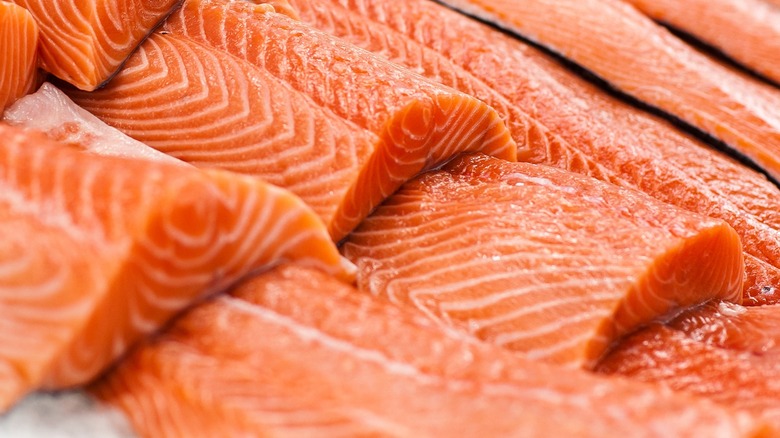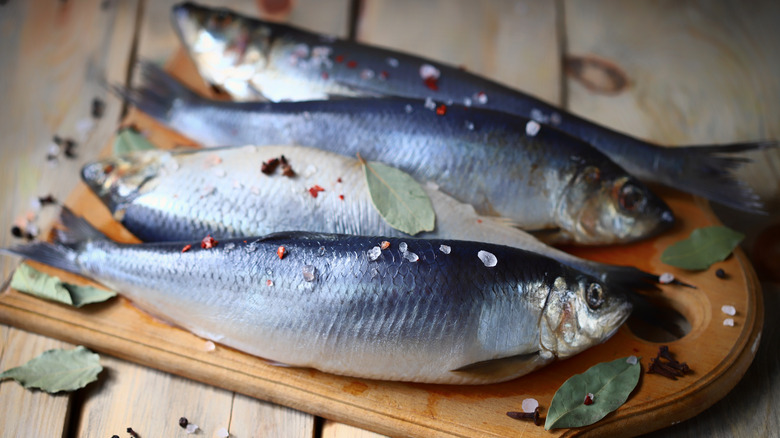These Fish Have The Highest Level Of Omega-3 Fatty Acids
There are six basic but necessary nutrients the human bodies need each day: protein, carbohydrates, vitamins, minerals, fats, and water (via Healthline). Fats are an energy source for the body and help with brain function and inflammation as well as maintain healthy blood sugar levels and minimize risks of type 2 diabetes and heart disease. The human body doesn't produce Omega-3 fatty acids on its own and therefore must obtain this essential fat from food (per Harvard Health).
Omega-3 fats are essential for heart health, proper artery wall and cell functions, hormone production, and genetic functions. These healthy fats also can reduce inflammation and the side effects of lupus, eczema, and rheumatoid arthritis, as well as minimizing the risk of heart disease and strokes (via Harvard Health). The most common healthy fats are omega-3 and omega-6, which can be found in nuts, seeds, certain vegetable oils, and fish (per Healthline).
According to Harvard Health, omega-3 fatty acids consist of eicosapentaenoic acid (EPA), docosahexaenoic acid (DHA), and alpha-linolenic acid (ALA), with EPA and DHA most commonly found in certain fish. The American Heart Association recommends eating at least two 3-ounce servings of any fish rich in omega-3 fatty acids once a week. But, which fish have the highest omega-3 fatty acid levels?
Mackerel has some of the highest amounts of omega-3 fatty acids
One 3.5-ounce serving of mackerel can have as much as 4,580 milligrams of omega-3 fatty acids, according to Healthline. Although mackerel has some of the highest levels of omega-3 fatty acids, it's also one of the few fish with extremely high levels of mercury, which is unsafe to consume. In fact, children, women who plan on becoming pregnant, and pregnant women are especially sensitive to high mercury levels, as reported by the Natural Resources Defense Council (NRDC).
As the NRDC states in its guide, king mackerel is among the fish with the highest mercury levels and should be avoided at all costs. Spanish and gulf mackerel also have high mercury levels, and children and pregnant women should not eat more than three servings in one month. However, North Atlantic and chub mackerel are some of the safest options in the NRDC guide as they contain low levels of mercury.
Salmon is a close runner-up, particularly if farmed
Salmon can have about 2,150 milligrams of omega-3 fatty acids in a 3.5-ounce serving, according to Healthline. More specifically, farm-raised salmon have higher levels of omega-3 fatty acids than wild-caught salmon, with a 6-ounce serving of wild-caught salmon having 1,774 milligrams of omega-3 fatty acids and a 6-ounce serving of farm-raised salmon having 4,504 milligrams of omega-3 fatty acids (via Harvard Health). In fact, their diet is the reason for the big difference in healthy fat levels.
Dr. Bruce Bistrian, a professor of medicine at Harvard Medical School, says that the diet of wild salmon consists of small fish with high levels of DHA and EPA, which are two of the three acids that make up omega-3 fatty acids. On the contrary, young farm-raised salmon are typically fed pellets that are high in plant and animal protein and later fed pellets with fish oil, leading to higher omega-3 fatty acid contents in the salmon's meat.
Herring, anchovies, and sardines
Herring, anchovies, and sardines also contain high levels of omega-3 fatty acids. According to Healthline, one 3.5-ounce serving of herring has about 2,150 milligrams of omega-3 fatty acids, one 3.5-ounce serving of anchovies has 2,053 milligrams of omega-3 fatty acids, and one 3.5-ounce serving of sardines has 982 milligrams of omega-3 fatty acids. However, there are a few health concerns regarding herring, anchovies, and sardines.
Typically, pickled herring is a very salty dish and contains high levels of tyramine, which could raise the blood pressure of anyone that takes monoamine oxidase inhibitors (via Verywell Fit). Healthline says that canned anchovies also may raise blood pressure because they are high in sodium. Furthermore, anchovies may contain domoic acid that could cause amnesic shellfish poisoning, and eating anchovies raw may result in a parasitic infection known as anisakiasis. According to WebMD, canned sardines may raise blood pressure because of their sodium content. Sardines also contain a lot of purines that create uric acid, which could lead to kidney stones and gout if consumed in excess.



